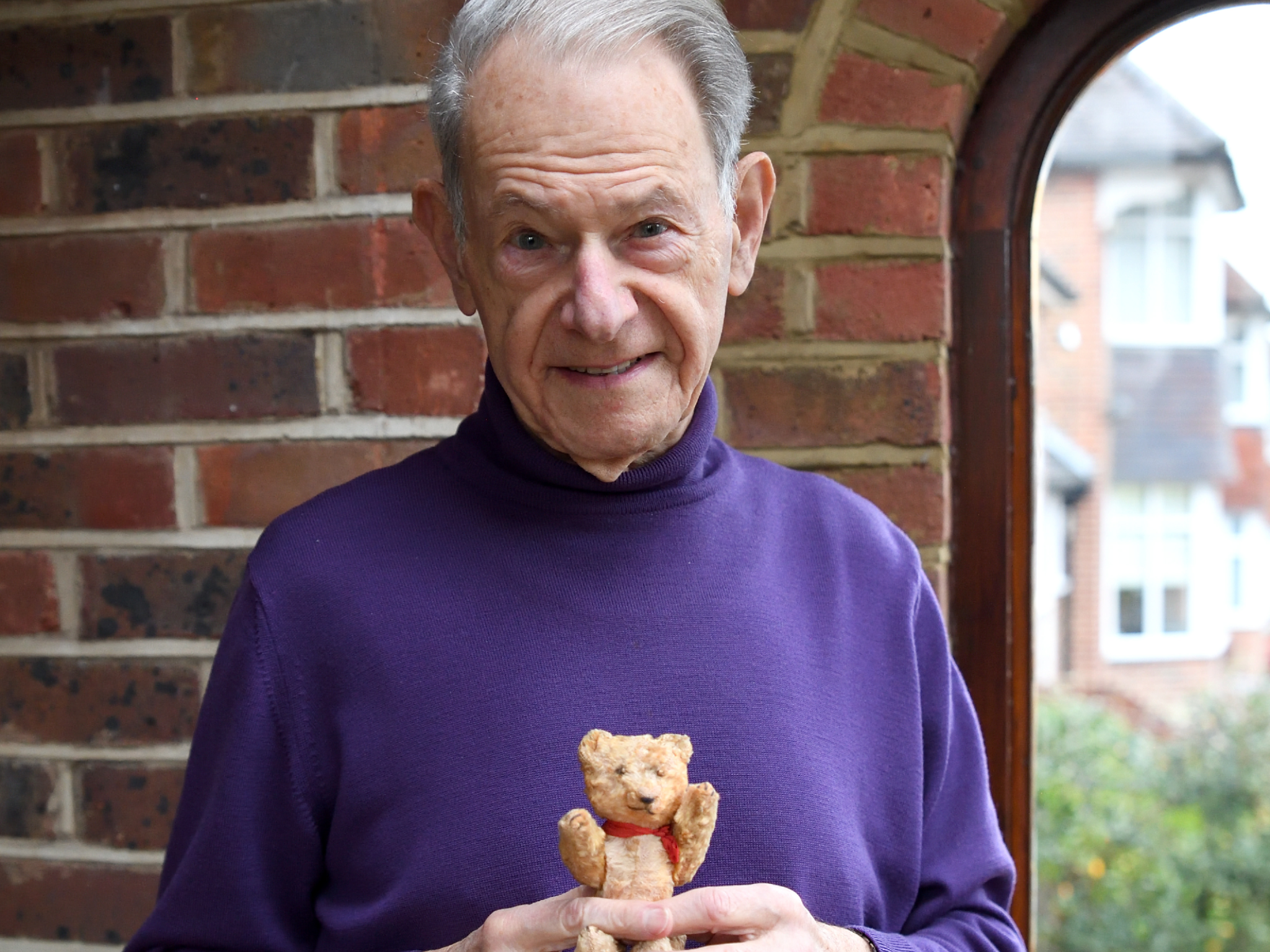The teddy bear that represents surviving the Holocaust
Holocaust Memorial Day: An online experience will tell the stories of four survivors and victims

John Hajdu, 85, was seven years old when the Hungarian Arrow Cross party, supporting the Nazi regime, rounded up Budapest’s Jews in a courtyard in 1944. He had been taken from his “yellow star” flat and given just minutes to say goodbye. John’s parents had already been sent to concentration camps.
“This is where my life changed,” he told The Independent. “My aunt who stayed with us said ‘come with me’. She grabbed me and rushed me across the corridor to a non-Jewish neighbour’s flat, who very kindly and very bravely agreed to hide her and me in a cupboard.”
But soon after, John and his aunt had no choice but to go into the Budapest ghetto, where he remembers seeing dead bodies in the street.
Through all this, John kept a precious object with him: his teddy bear. “It was in the original flat of my parents … I grabbed him when we were going to hide in the cupboard; I grabbed him when we went to the yellow star house, and I grabbed him when we went to the ghetto,” he said.
The teddy bear represents John’s survival of the Holocaust, his later escape from Hungary after the Soviet invasion and his journey to England as a refugee in 1956. He still keeps it on his desk and shows it to pupils when he visits schools.
But teaching future generations about the Holocaust is becoming increasingly challenging, John admitted.
It is why the Holocaust Memorial Day Trust is initiating one of the UK’s first large-scale Holocaust education projects fit for a post-survivor world, using artefacts similar to John’s teddy.
“Ordinary Objects, Extraordinary Journeys” is an online immersive experience launching on Tuesday. Users can enter the site via “people”, “object” or “journey” and interact with the stories of four Holocaust survivors and victims – Eda, Daniel, Julie and Julius – before, during and, in some cases, after the genocide.
It is already being tested in libraries, museums, with local authorities across the country and with trainee teachers in Greece.
“Most people’s favourite so far is the mezuzah [a religious object affixed to a doorpost] because you can spin it around and look at it from different angles,” Dr Rachel Century, deputy chief executive of the trust, said.
Another object users can interact with is a pair of socks knitted by Eda de Botton in Bergen-Belsen concentration camp for her daughter, Reina, in roughly 1943-45. More than a pair of socks, they are a powerful testimony. Eda held onto them for her daughter in the hopes they would be reunited.
“We are always thinking about ways that we can continue their legacy and ensure that their testimony continues,” Dr Century said. “We wanted to do that through artefacts, objects, because once the survivors are no longer able to tell their story, their artefacts still will be available.”
Scott Saunders, founder and chair of March of the Living UK, an organisation that takes hundreds of Brits to Poland every year to march from Auschwitz to Birkenau with survivors, said continuing their legacy is “a challenge for every organisation globally that’s involved in Holocaust education”.
“The necessity of Holocaust education increases with no more survivors … the growth of Holocaust denial will only grow, will only get traction, once there are no survivors to turn around and say ‘I was there,’” he added.
He told The Independent his organisation is “in discussions with our second- and third-generation” survivors to keep the stories of survivors alive on the Poland trip.
It is an approach the Holocaust Education Trust is taking too. “Second-generation survivors are really important in terms of carrying on that story,” Nicole Wu, a regional ambassador for the trust, said.
“It’s not a perfect world,” Mr Saunders said. “But it is time to explore the best way that we can maintain those stories and tell their stories in an authentic way.”
The Holocaust Memorial Day Trust’s online interactive approach to maintaining these stories has been more than a year in the making.
The objects currently on the microsite were found with help from the National Holocaust Centre and the Jewish Museum of Greece.
“We know that people in the UK just don’t know enough about what happened to Greek Jews in the Holocaust,” Dr Century said. “And likewise, people in Greece don’t know anything about the Kindertransport. So we’re taking these untold stories, we’re sharing them with people that would never see the artefacts.”
In future, the trust plans to partner with other international organisations to map even more Holocaust journeys.
“If you look at the map page, you can see the full journeys all mapped on top of each other. What I really hope that will show is it will begin to show a little bit of the complexity of the Holocaust … by layering the different journeys on top of each other, you could really see that it was complicated,” she said.
“We didn’t want to trivialise anything,” Dr Century added. “It’s a real responsibility for us to get this right.”
And “Ordinary Objects” already has the seal of approval from John. “It’s absolutely vital to continue with the project,” he said. “Don’t forget I’m living history. We won’t be here in 10 years’ time.” Crucially though, objects like his teddy bear will.
Subscribe to Independent Premium to bookmark this article
Want to bookmark your favourite articles and stories to read or reference later? Start your Independent Premium subscription today.

Join our commenting forum
Join thought-provoking conversations, follow other Independent readers and see their replies